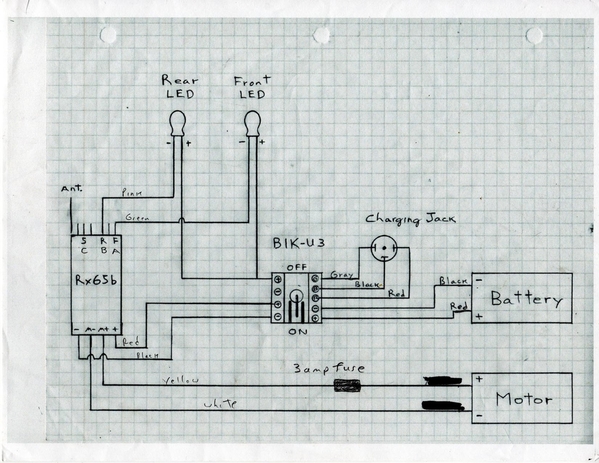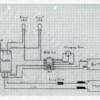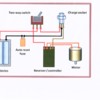Saw this topic briefly mentioned in earlier issue. Does it have any traction in O-scale? Gets rid of all work and headaches of track wiring/cleaning. There are advancements in battery technology that should make this feasible- switches and buildings still would require power but simplicity (and not having to spend time on your knees under layout) would be a big advantage. Might be easier to get young people interested. Thoughts, anyone?
Replies sorted oldest to newest
Dead rail is very big with the garden modeler crowd, for obvious reasons, don't have to worry about cleaning track, electrical connectivity, animals chewing through your wiring.
There are a number of remote control systems that can incorporate a dead rail feature. Many now have a bluetooth option so you don't need to buy a controller, just use your smartphone. I have an MTH PS2 switcher with a bad board and will try one of those dead rail systems to resurrect it. Might come out cheaper than rebuilding the PS electronics or switching it to TMCC.
Thanks for responding! Based on your thoughts, I will keep looking into this.
See the fantastic O scale layout featured in "Great Model Railroads 2020" (Look Ma, no wires, page 26)
This old Lionel GP-7 with a Pullmor motor was converted to battery power. It was pulling the pictured train yesterday on the G&O Garden Railroad.
The owner uses the Airwire Radio system. The locomotive has a full sound and light system and will operate for about 4 hours on one charge. This is more than enough time for our typical train show or run.
The owner has converted about six engines to battery power using the Airwire system. They all work great. The battery powered engines are more reliable than the track powered engines in that the signal is never lost and they run just fine with dirty track. In fact, they run with no track at all.
The only issue with battery power conversion for me is that it is expensive and the sound and smoke options are not easily available. The cost can run $100 to $200 per engine. NH Joe
Attachments
I think it has gotten to the point where dead rail is no longer impractical. Battery power has grown and sizes have shrunk to the point where it will be possible to put this kind of setups in engines and the like. The real problem as I see it is it still is in the 'hobbyist' phase in that to use dead rail you have to find the components from various sources and then integrate them and there are no standards (good question with the wireless command system, are they using DCC or is it custom done protocol for sound and control?).
To get this to really take off I think we would need the big manufacturers to offer new items RTR with dead rail, but they in turn are waiting for there to be some sort of groundswell. Lionel and MTH have large investment and revenue in live rails, with DCS and Legacy command systems, transformers and so forth and a lot of people may be reluctant to switch for the same reasons, their investment in powered rails/dcs/legacy. Lionel in theory could offer dead rail as an option for lc+/lc 2.0, given they offer direct bluetooth control of the engine, the motor is already dc, so basically it would involve fitting a battery to the engine, with perhaps a selector switch to allow it to run live or dead rail.
If Lionel, MTH and Atlas would offer locomotives at current prices (or nearly so) with an integrated, standardized battery-powered system, that is the version I would buy.
MELGAR
The costs of the batteries need to come down.
Same with autos.. 10 grand to replace batteries...same with solar..
I have a fleet of battery powered engines using four different RC systems. One was detailed in an OGRR article. All work beautifully. The LiPO batteries I've used are not that expensive. Remaining operating issue is: easy to implement recharging, which I plan to work on next. I still run conventional and TMCC, but must admit that when I was engaged in my monthly layout track cleaning effort, I could not help but reflect on how battery powered engines don't seem to be affected by dirty track or troublesome switches.
I wonder how easy it would be to convert a locomotive to radio control using the systems that the R/C boys use in their trucks or ships. The battery and the receiver board could fit into a tender and small servos could be in the boiler attached to the smoke unit for a chuffing action. I could also see a servo attached to the bell to make it move or one in an engineer's body to make him turn around when you reverse direction.
Great food for thought. You are quite aways ahead of me in the technical area but now I know where to spen my time. Thanks
BOB WALKER posted:I could not help but reflect on how battery powered engines don't seem to be affected by dirty track or troublesome switches.
Well... they still derail if the switch is mechanically flawed. ![]()
As someone with a law school education and a background in small business, I can easily believe your story and the terror which the phrase "potential liability" strikes in the hearts of any board of directors. At least now I have some of the background story. Thanks for the detailed reply!
The potential problems with the newer batteries is well documented. When I recharge, I carefully monitor the recharge current and the battery voltage. A voltmeter connected across a 1 ohm resistor in series with the power supply is a relatively simple and accurate way to measure current. Cell voltage is a prime indicator of battery status and health. There is a wealth of info on this subject available on-line.
BOB WALKER posted:There is a wealth of info on this subject available on-line.
True, but this takes it out of the realm of the non-technical guys.
Being a non-technical guy, it will take someone smarter than me to come up with a marketable system, hopefully within the next few years.
The 2 limiting factors are (1) there are no RTR BPRC engines currently available and (2) I haven't found a single source for the components I use.
Here's a diagram that I have used for most of my BPRC'd engines:
The DC motors I used are the ones that came with the engines.
The Deltang RX-65 receiver (and TX-22 transmitter) can be purchased from 1 dealer (in my case I used Micron Radio Control in the UK). The Tx takes a 9v battery. I get my Rx pre-wired so I don't have to touch a soldering iron to the board, just to the ends of the wires.
The 9.6v 2000Mah NiMh battery is made by Tenergy, available on Amazon for under $20. You'll also need a charger. Capable of hundreds of charges the batteries I have (18 engines last count) should last many more years
The BIK-U3 and charging jack came from RCS Australia. Love these things but it takes 10-14 days to get them. Basically the thing can be made using a charging jack, on/off switch, and some polyfuses, but RCS tidies it all up on a small circuit board. I also installed a polyfuse inline between the motor and the Rx.
And you'll need a couple of LEDs for headlight/rear headlight. I got mine from Evans Designs.
Here's a basic diagram with individual components (switch, fuse, charging socket) vice using the BIK-U3:
So far I have installed BPRC in a MTH RailKing Imperial USRA 0-6-0 (smallest engine I have) to a Williams brass N&W J 4-8-4 (biggest/heaviest engine I have). Most have 9.6v 2000Mah NiMh batteries, some have 12v 2000Mah NiMh batteries, and some have 11.1 2200Mah LiPo batteries. All give me runs of 2 to 2.5 hours and take the same time to recharge (haven't tried anything more than 1A/hr charging). All steam engine batteries are in the tenders, all diesels are inside under the shell. I have installed BPRC in MTH, Lionel, Weaver, Atlas, Williams, and Williams by Bachmann engines and all have performed wonderfully.
Bob Walker has provided me with much expertise (thanks Bob!), but a lot of it was on my shoulders. I do (did) have some electronic knowledge from working on Navy gear back in the 70s-80s, but I've been retired almost 14 years and have forgotten most of what (I thought) I knew. If you can follow instructions and solder you're half way there!!!
Go here to see what the BIK-U3 looks like:
Attachments
Very nice to be thanked for providing help to a fellow modeler. One of the key points made by Bob D. is that a certain skill level may be necessary for a successful conversion to battery power. Another key element listed by Bob D. is that almost any current brand of engine can be converted, which is also my experience to date. I enjoy battery power, but the other day I recalled that this give up some of the very interesting conventional power automatic block control schemes I designed and are active on my layout, but I'll get over it.
quimby posted:Great food for thought. You are quite aways ahead of me in the technical area but now I know where to spen my time. Thanks
I saw an article in a magazine quite a while ago (I can't remember which one ) where someone took an O-scale scale diesel and installed an engineer figure that turns around when the direction was changed. He was cut in half at the stomach and the upper torso was attached to a solenoid so when the direction was changed he would look toward that direction. Was pretty neat, if I find the article, I will post a link.
What amp polyfuse do you wire inline? I'm looking at doing my first dead rail install and I'm curious.
Thanks,










